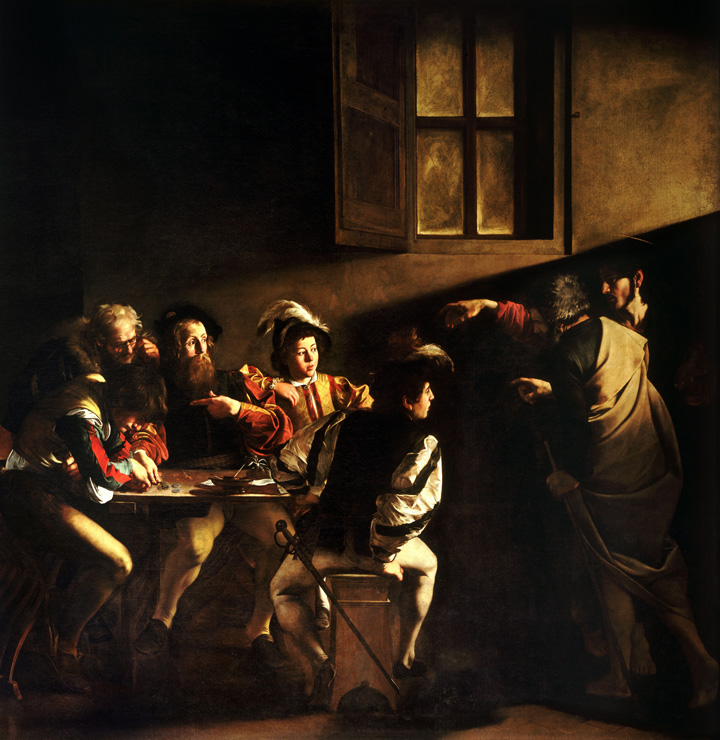It was Ash Wednesday, and I had a long day ahead of me. Clutching my coffee cup, I slumped down into my seat for my 8am Prophetic Traditions class with Fr. Dale Launderville. We had already made our way through Joel, Amos, Micah and Ezekiel, and now we were knee-deep in the miry waters of Isaiah. The knotty book of soaring poetry and evocative prose was also filled with obscure history, politics and various strains of editors. Flipping to a clean page in my notebook, I braced myself for a morning of busy note-taking.
But Fr. Dale began with an image: “Isaiah has been described as a prophet who works in chiaroscuro.” The sentence stopped me in my tracks. Chiaroscuro. Slowly, my sleep-addled mind began to flood with images of master paintings: Da Vinci, Caravaggio, Rembrandt, Velazquez. The ancient technique of working in strong contrasting dark shadows against light to suggest volume and atmosphere reached a high point during the Renaissance, particularly in the area of sacred art. It was a great way to think about the prophets, so often called upon to draw attention to the darkness of sin, injustice and corruption in a society before highlighting the saving light of God. The term chiaroscuro seemed particularly apt as I contemplated the beginning of Lent this year.
This has been a particularly demanding semester. Along with a full load of classes, I had recently submitted my Masters thesis in scripture and was now working through an intimidating book list for my comprehensives. I was staying up late, eating and sleeping poorly, and all of my energy felt eaten up by academics. On most days, my prayers were usually pleas: Help, God! The water is up to my neck (Psalm 69:1). Although I felt lucky to be taking classes and to have the time and space to devote to thinking and writing, it was taking a toll. Lent was a good time for self-reflection, repentance and change.
And I have often found sacred art to be a particular help. It helps still my mind, focus my attention, inspire my creativity and insight, and draw me gently into prayer. That Ash Wednesday morning, in Fr. Dale’s class, the painting that flashed up in my mind’s eye was The Calling of Saint Matthew by Caravaggio. It seemed a prophetic sign. The painting itself is glorious. Jesus is obscured in shadow, hand languidly pointing toward a table of apparent no-goods in the midst of gambling. The shape of Jesus’ hand looks deliberately to be imitating that of Adam in Michelangelo’s Sistine Chapel, a theological statement that affirms Jesus’ humanity and underscores his status as a redemptive “second Adam.”
But the focus really isn’t on Jesus, it’s on that table of ruffians, one of whom is being called. A strong light is falling from above on each of those rough characters, startled out of their vice by Christ’s address. It’s not clear who Jesus is pointing to, and the ambiguity falls back upon the viewer: is it me, Lord? What would I do? How would I respond to that hand reaching out to me from the darkness? The shape of a cross in the window signifies what this call truly means. According to biblical tradition (Mt 9:9), Matthew was a tax-collector, a scoundrel who had volunteered to work for the oppressive Roman regime against his own community for personal gain. This was no saint; this is someone I can relate to.
The poet, Luci Shaw, goes so far as to call Christ a chiaroscuro God, “chiaro (clear, or light) combined with oscuro (dark), suggesting ambiguity and paradox, a fitting term for a deity who has revealed himself in the flesh yet walks in mystery, who scatters clues and hints to his being throughout creation, Holy Scripture, and the human mind, leaving his burning footprints on the lake, but then withdrawing.” (Breath for the Bones: Art, Imagination and Spirit, by Luci Shaw) It’s this statement that I’ll be carrying into Lent this year, as I look more intently for a God who often stands in the shadows of my life, calling me even now to respond.
________________________
Read other blog posts from Sister Rosy in her series, Letters home.




Comments 6
“Here I am, Lord. Is it I, Lord? I have heard you calling in the night. I will go, Lord, if you lead me. I will hold your people in my heart.”
Thank you, Rosy!
Thank you for your thoughtful and graced reflection, Rosy. It inspires me for the Lenten journey.
Love and prayers, Sr. Margaret
(Sis in Prayer)
Rosy, we both are art-insighted sojourners.
Your blog offers word-crafted lyrics to
loft our animus and you illustrate
and illumine with the art provided.
Cor ad cor
Only you Lord know me You know all my DNA from thousands of years!! You know my sin and my love for many. I am near the end and Your love and forgiveness have connected us in eternity and I already know the peace and joy and love. And its spreading and moving and living forever.
Nine words, one more powerful chiaroscuro for this season. (Perhaps a bit modified in the technical sense.)
Rembrandt Van Rijn: The Return of the Prodigal Son.
Thank you, Rosie!
?
Thank you for sharing your thoughts on Chiaroscuro and “the Calling of Matthew.”
Both enlightening!
I’ll be praying for your stamina. May HS guide you and God provide all your needs and then some!
Peace,
Nancy